
An Alberta clipper will bring lake effect snow downwind of the Great Lakes, with the highest snow totals downwind of Lakes Erie and Ontario. Snow squalls may impact New Year's Eve travel during the evening and overnight hours across parts of the Great Lakes, Ohio Valley, and Northeast. Heavy rain will bring a flash flooding threat for southern California on New Year's Eve into New Year's Day. Read More >
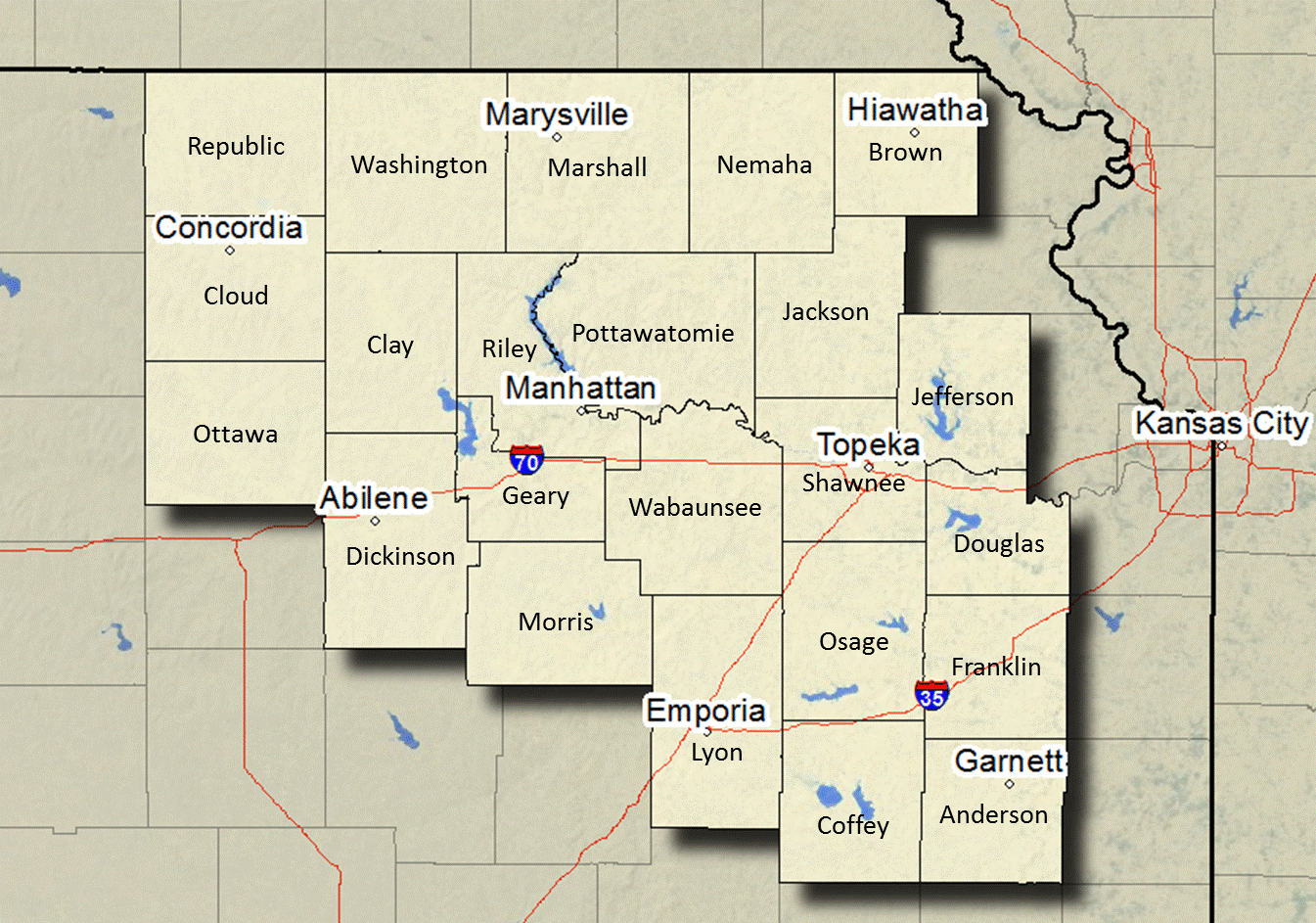 The National Weather Service (NWS) office in Topeka, KS is one of 122 Weather Forecast Offices (WFOs) that serve the entire United States and its territories. The mission of the National Weather Service is to provide weather, water, and climate data, forecasts and warnings for the protection of life and property and enhancement of the national economy. Our office collects weather observations and issues public forecasts, watches, warnings, advisories, and other weather-related products for 23 counties in northeast Kansas (see map to the right).
The National Weather Service (NWS) office in Topeka, KS is one of 122 Weather Forecast Offices (WFOs) that serve the entire United States and its territories. The mission of the National Weather Service is to provide weather, water, and climate data, forecasts and warnings for the protection of life and property and enhancement of the national economy. Our office collects weather observations and issues public forecasts, watches, warnings, advisories, and other weather-related products for 23 counties in northeast Kansas (see map to the right).
We also issue terminal aerodrome forecasts for three local airports, fire weather forecasts for government and commercial interests, and river stage forecasts. We have 22 staff members, including 13 full-time forecasters. Our equipment includes a WSR-88D Doppler radar, five NOAA Weather Radio transmitters, and dozens of river gauges and automated surface observation sites. We also maintain an active public outreach program, including cooperative weather observers, trained storm spotters, as well as interacting with the general public at local events. Our office maintains close involvement with local scientific organizations, media outlets, and law enforcement and emergency management personnel.
There is a long and distinguished history of weather observations, reports, and forecasts from the National Weather Service/US Weather Bureau in Topeka, Kansas. This history extends back to the 1850s and spans numerous locations, duties, responsibilities, and personnel.
The earliest known Topeka weather records were made by volunteer observers beginning in 1858 and continued intermittently through 1877. The observations were made with the aid and guidance of the Smithsonian Institution, and are still on file in the National Archives. From January 1878 to May 1887, daily temperature and precipitation records were kept in cooperation with the U.S. Army Signal Service by Professor J. T. Lovewell of Washburn College.
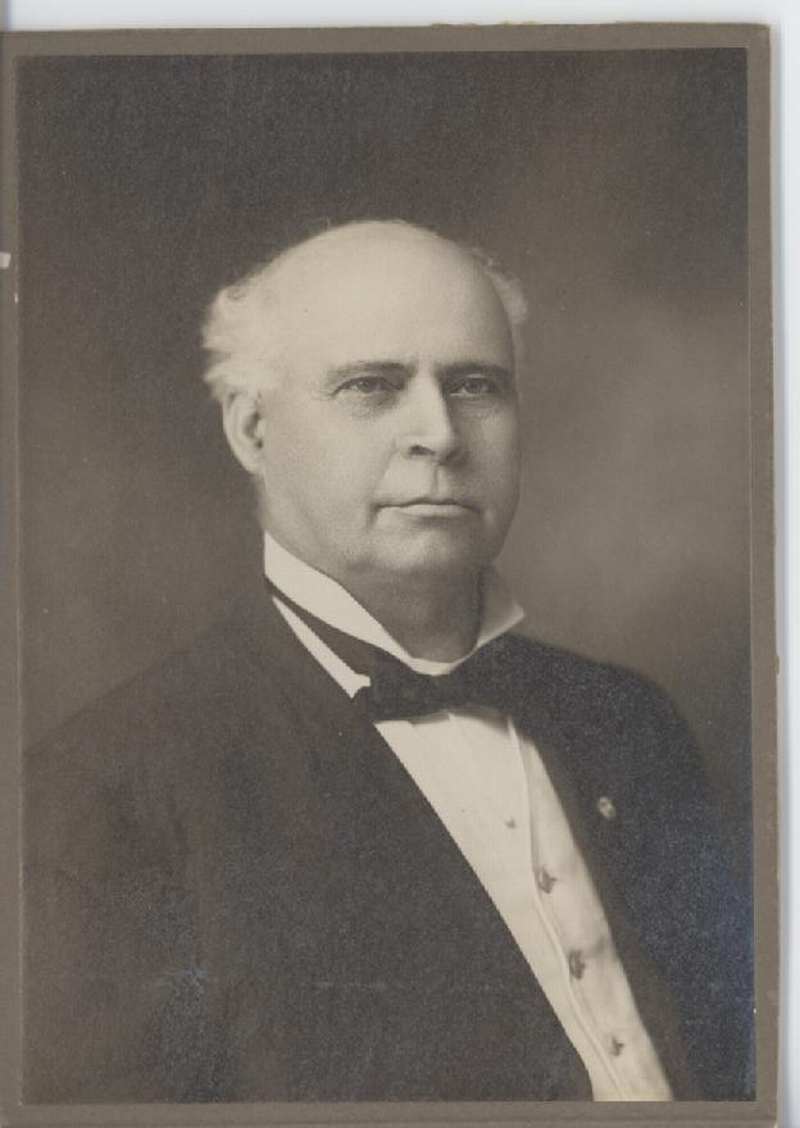 On June 1, 1887, a First Order Station of the U. S. Army Signal Service, was established in Rice Hall on the Washburn College campus with Sergeant J. B. Jennings in charge of the station and staff. Weather records begun this day in 1887 for Topeka continue to the present. In 1890, Congress passed the Organic Act, establishing the U. S. Weather Bureau as a civilian agency under the Department of Agriculture, taking over duties of the Signal Service.
On June 1, 1887, a First Order Station of the U. S. Army Signal Service, was established in Rice Hall on the Washburn College campus with Sergeant J. B. Jennings in charge of the station and staff. Weather records begun this day in 1887 for Topeka continue to the present. In 1890, Congress passed the Organic Act, establishing the U. S. Weather Bureau as a civilian agency under the Department of Agriculture, taking over duties of the Signal Service.
Eighty years later, in October of 1970, the Weather Bureau was renamed the National Weather Service, an agency of the National Oceanic and Atmospheric Administration (NOAA) under the U.S. Department of Commerce.

Throughout the years, the Weather Bureau, and later National Weather Service, occupied several locations in Topeka before settling at the current location in 1976 at 1116 NE Strait Avenue on the northwest edge of Billard Municipal Airport:
1887 - 1892 Rice Hall at Washburn College
1892 - 1908 Columbian Building (Knox Building), 112 W. 6th St
1908 - 1918 Mulvane Building, 6th and Kansas Ave
1918 - 1933 New England Building, 5th and Kansas Ave
1933 - 1959 Federal Building (Post Office), 5th and Kansas Ave
1944 - Present Phillip Billard Municipal Airport (3 locations)
The “Official“ observation site for Topeka was transferred to the airport location from downtown on August 14, 1946, with comparative and climatological records kept at the Post Office building until April 1959.
There have been only nine Meteorologists-in-Charge since 1887 for weather offices in the Topeka area, with two of the officials serving over 30 years.
Some milestone events in the history of the Topeka National Weather Service office:
|
1935 - 1955 Spring 1935 - Direct radio broadcasts began through Topeka station WIBW.
June 4, 1953 - First weather radar, WSR-1, installed at the Topeka office. June 4, 1955 - Weather teletype communications circuit installed with 4 subscribers in Topeka (right photo).
|
1956 - 1965
April 19, 1957 - Radar updated to a newer and more advanced WSR-3 model. Famous hook echo image detected from Meriden, KS Tornado in 1962 (photos below).
March 1, 1963 - Kansas statewide weather teletype circuit established in cooperation with the Kansas Association of Broadcasters combining the Topeka and Wichita local circuits (left photo). |
|
1966 - 1977 June 8, 1966 - One of the largest and most devastating tornadoes in U.S. history tore a long path through Topeka killing 16 people and injuring over 400. The tornado damages Billard airport, including Weather Bureau office, where people fled under tables for safety.
March 1972 - Direct audio broadcast line established to Topeka and Lawrence broadcasters for immediate relay of severe weather information. July 1, 1973 - Office becomes state forecast center for Kansas with new responsibility of statewide zone & aviation forecasts-staff also increases. October 1975 - Near real-time satellite images received every 30 minutes from the GOES satellites.
|
1978 - 1989
August 1978 - AFOS (Automation of Field Operations and Services) computer system installed. One of the first systems in the new NWS nationwide computer network (photo below).
Spring 1985 - Kansas begins testing new surface observing equipment, ASOS, that was installed nationwide in the 1990’s.
|
|
1990 - 2000 1990’s - NWS Modernization and Restructuring (MAR) takes place with significant changes in duties, personnel and responsibilities. May 1993 - Radar updated to the most advanced Doppler system, WSR-88D, and moved to near Alma, KS. Radar was commissioned in January 1995 and the WSR-74C antenna in Topeka removed (tower remains).
August 1994 - Concordia NWS office closed and many duties and responsibilities transferred to the Topeka office, including NOAA Weather radio.
|
2001 - 2005 September 2000 - NOAA Weather Radio at Abilene on the air. October 2000 - AFOS computer system removed. Spring 2001 - Graphical Forecast Editor (GFE) software used for the first time to produce digital gridded forecasts. August 2001 - NOAA Weather Radio at Blue Rapids on the air. Fall 2001 - Weather Event Simulator is installed at WFO Topeka, providing a simulation system on an AWIPS workstation for training on warning and forecasting for significant weather (bottom left photo). July 23, 2002 - NOAA Weather Radio at Halls Summit begins broadcasting (bottom right photo).
|
|
2006 - 2015 Spring 2006 - Chat system first utilized to communicate with media and emergency management partners across the internet. Spring 2009 - Upper air radiosonde system upgraded to be able to utilize GPS technology. (Photos below.)
January 2012 - KTWX WSR-88D radar near Alma KS upgraded to new dual-polarization technology, giving additional information about radar echo type, precipitation estimates, hail occurrence and tornado debris signatures. (Photos below.)
June 2015 - AWIPS software upgraded to AWIPS2, providing additional enhancements and increased computing power. |
2016 - Present September 2016 - New radiosonde system (Transitional Radiosonde Observation System) is installed and utilizes all solid state antenna components. July 2022 - Manual Radiosonde Observation System (MROS) replaced the Transitional Radiosonde Observation System (TROS). The new system offers better software interface for users during a radiosonde flight, and placed the antenna on the roof of the WFO for the first time since 1977. (Photos below.)
|
Below are photos of our office, equipment, and staff in action! Our staff perform a wide variety of duties, ranging from everyday forecasts and weather support to equipment installation and maintenance. We take part in various outreach events throughout the year in addition to conducting scientific studies and presentations.
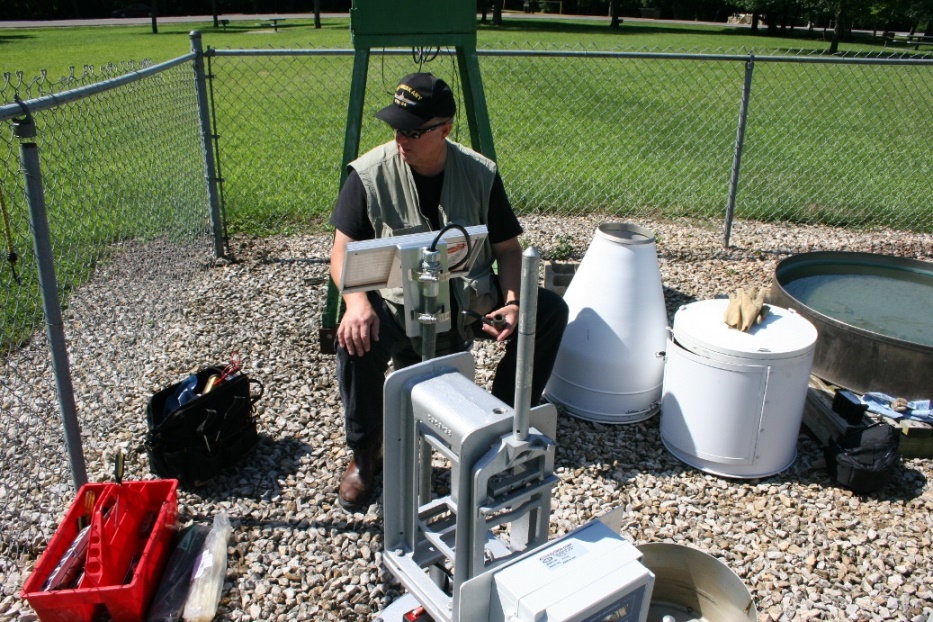 |
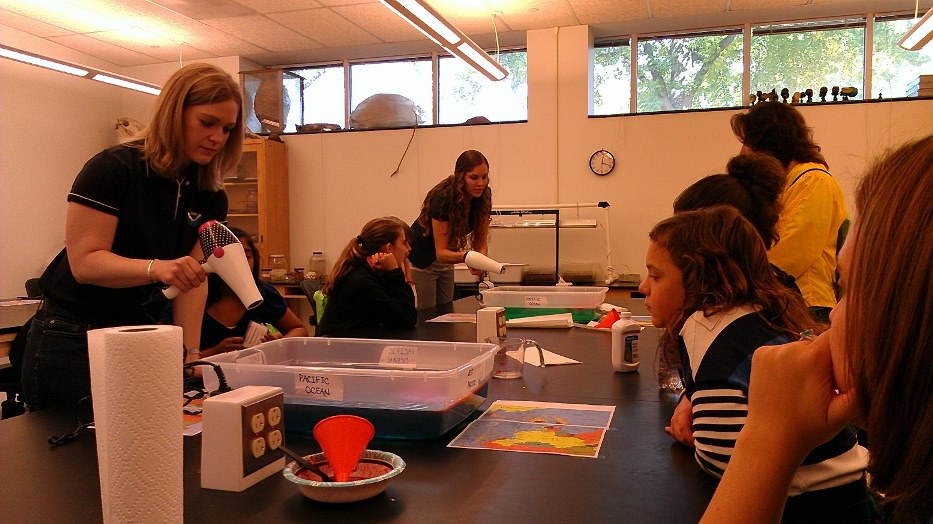 |
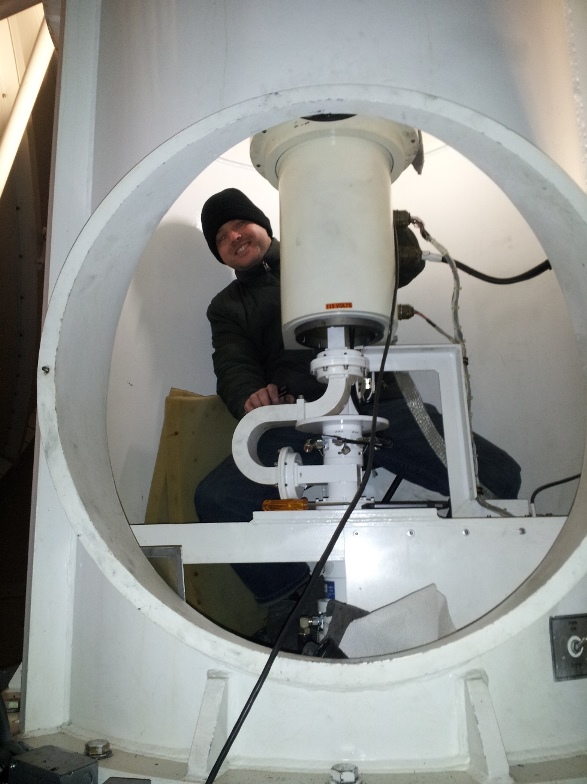 |
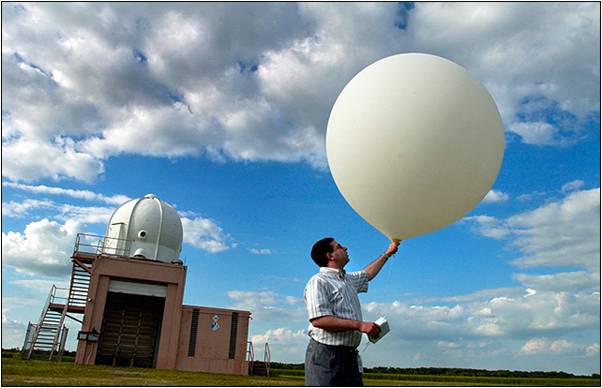 |
|
Maintaining one of our many cooperative observer stations across the region. |
Several meteorologists helping girls at a Women in Science seminar. |
An electronics technician working on the radar pedestal. |
Launching a weather balloon. |
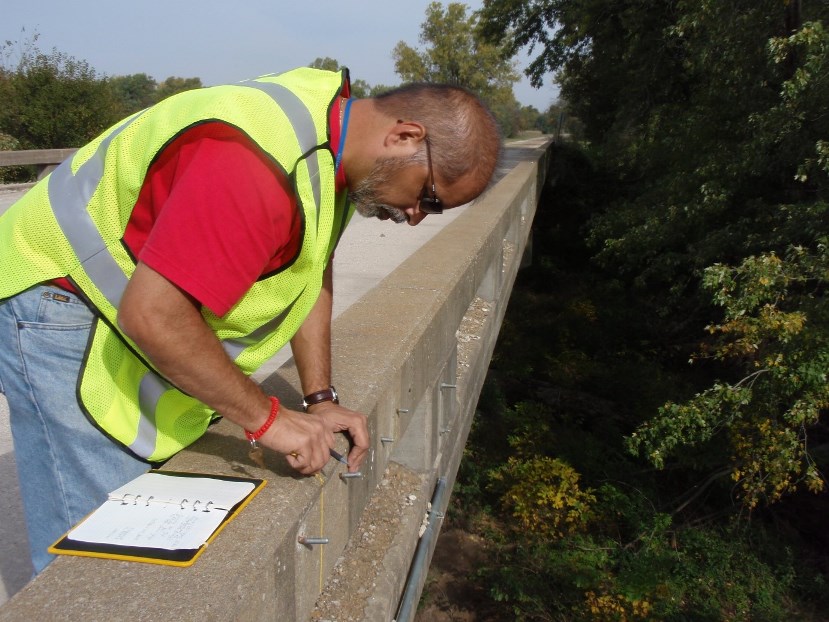 |
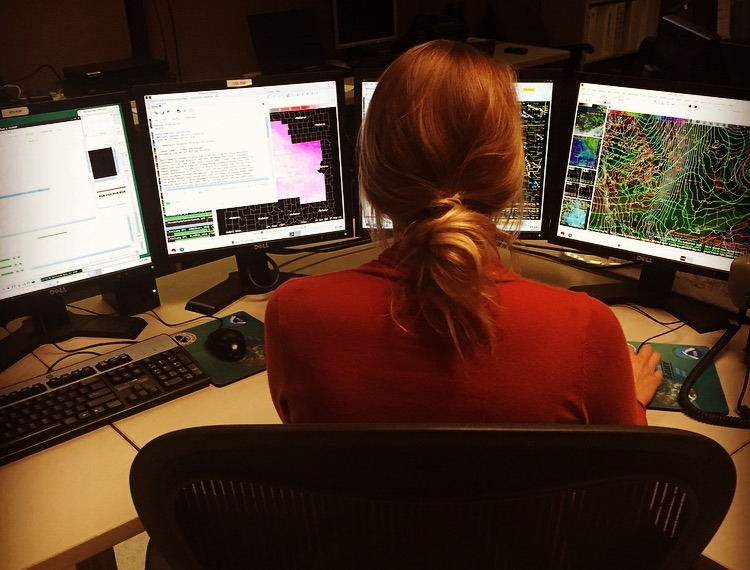 |
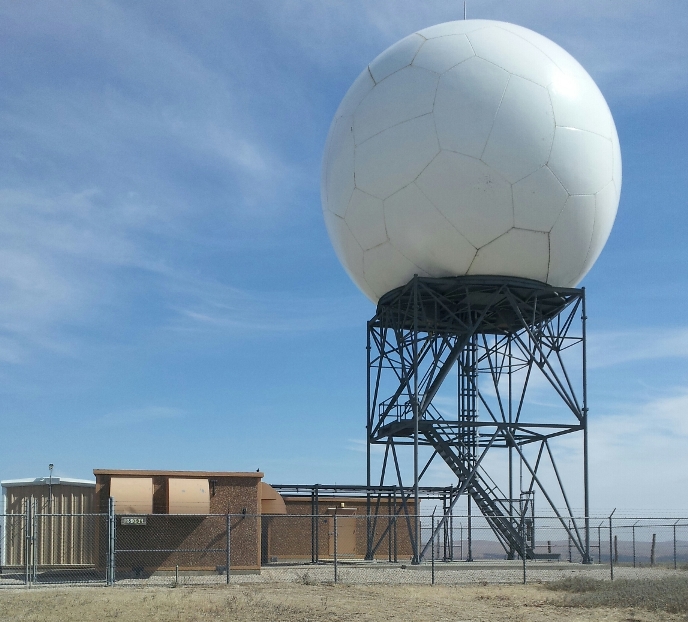 |
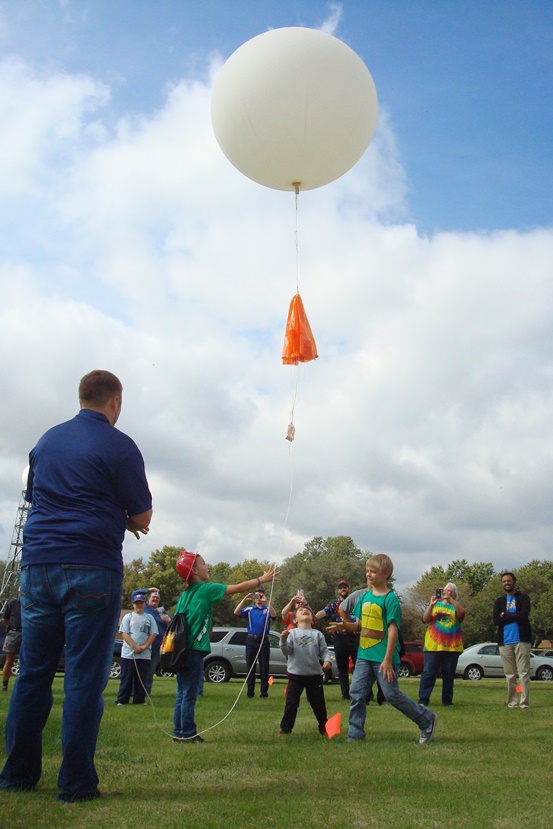 |
|
Installing a river gauge on a local bridge. |
A meteorologist working on a forecast using the AWIPS computer system. |
The KTWX radar located near Alma, KS has been scanning the skies over NE Kansas since 1995. |
Children launching a weather balloon during an open house. |
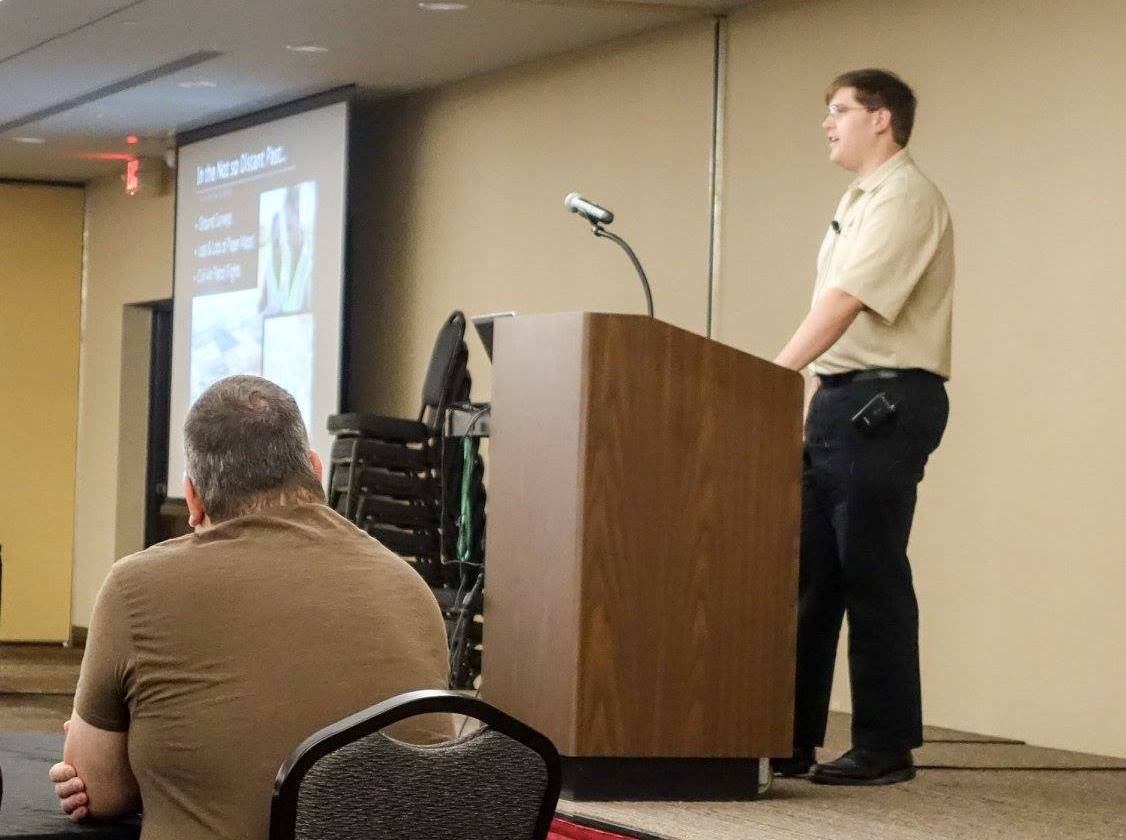 |
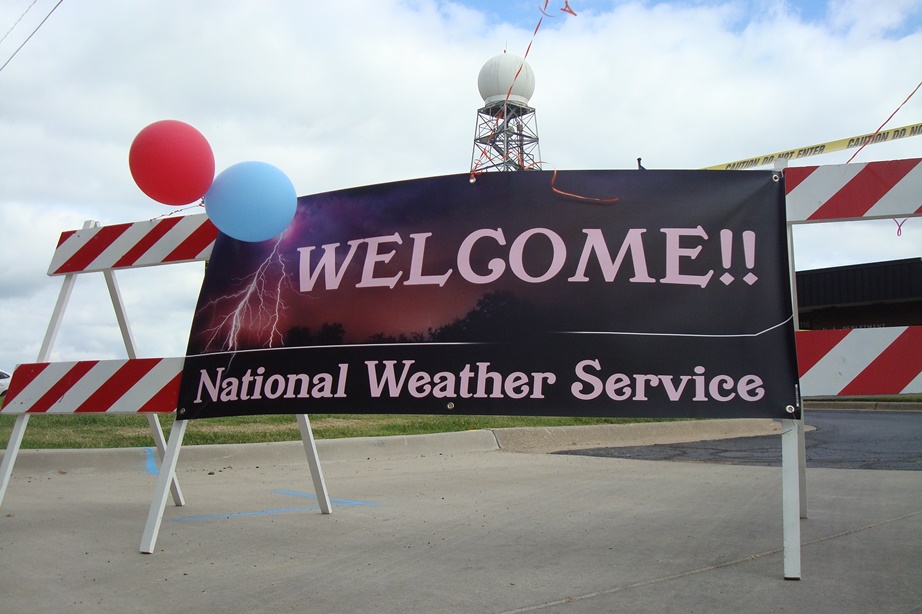 |
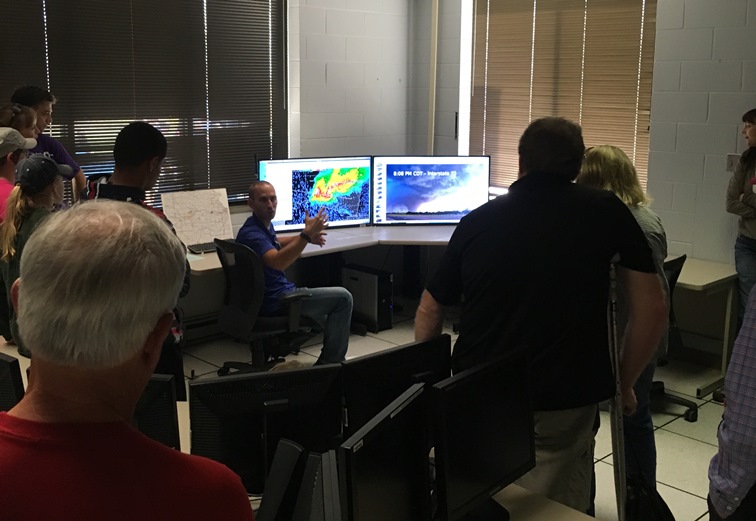 |
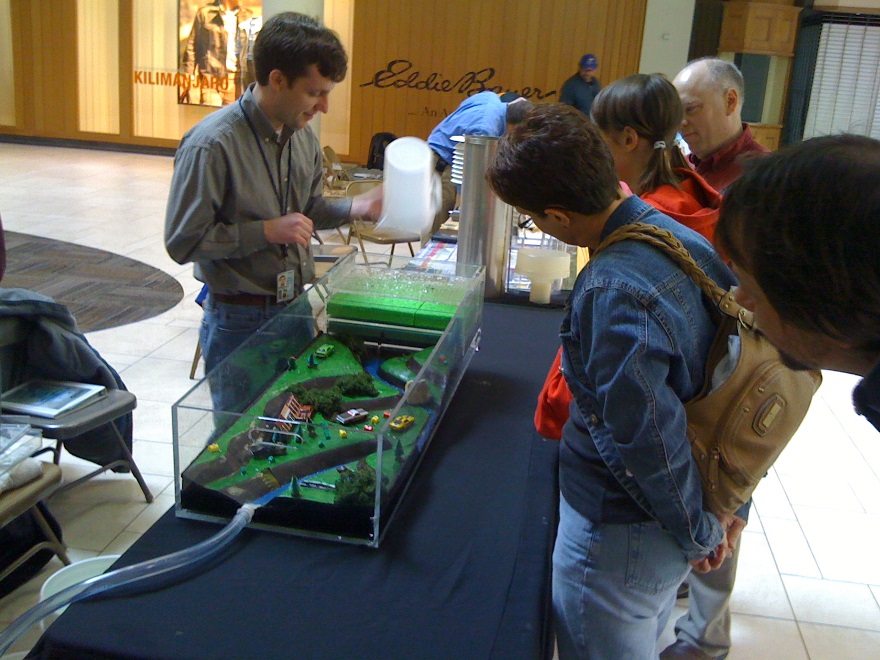 |
|
Presenting severe weather research at a local conference. |
A welcome sign at our open house in 2016. |
A meteorologist demonstrating warning operations. |
Showing the public how floods can occur using a hydrologic model. |
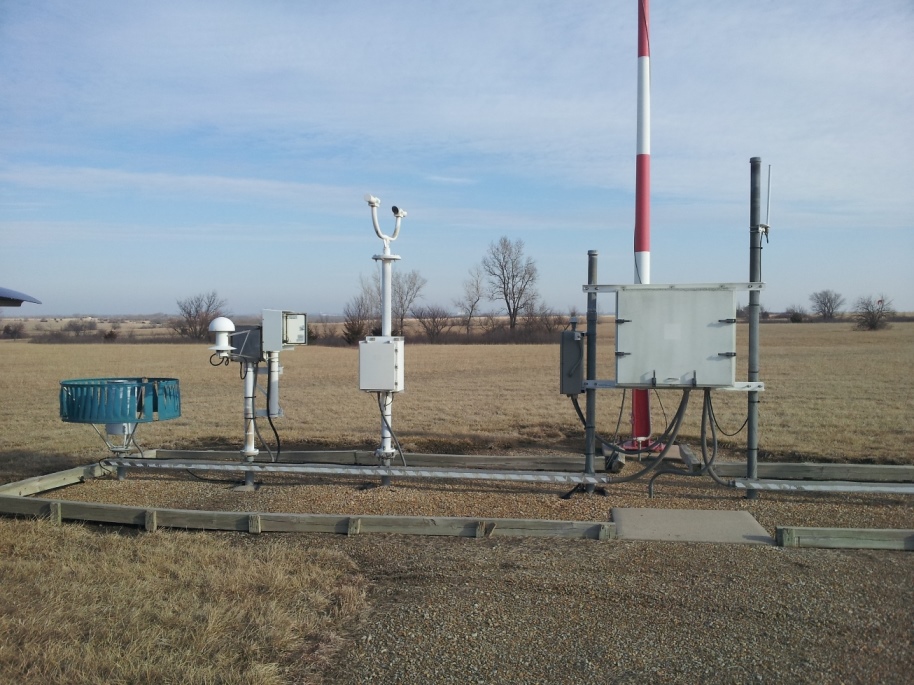 |
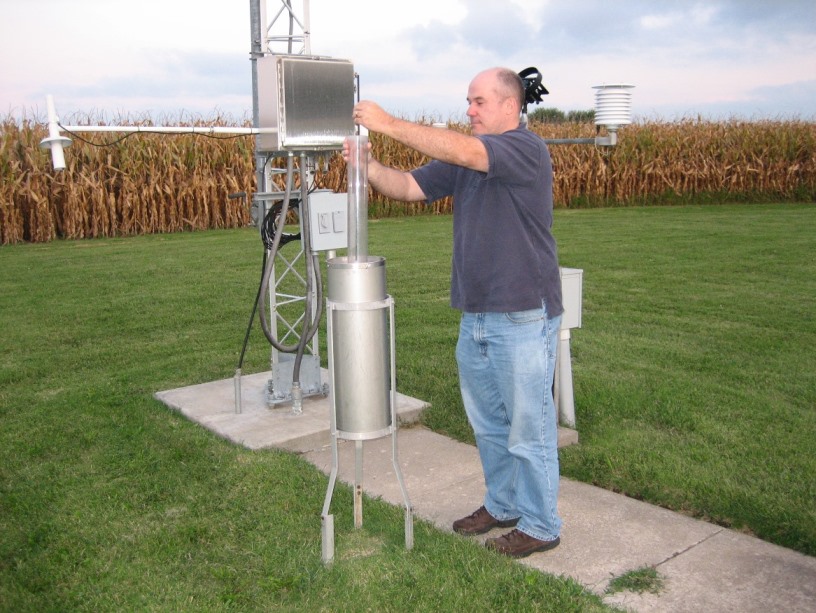 |
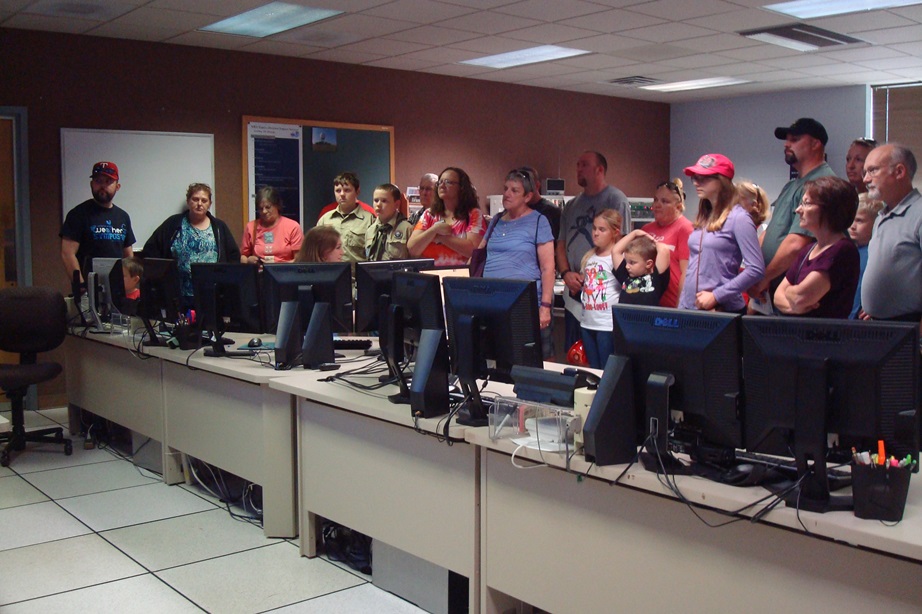 |
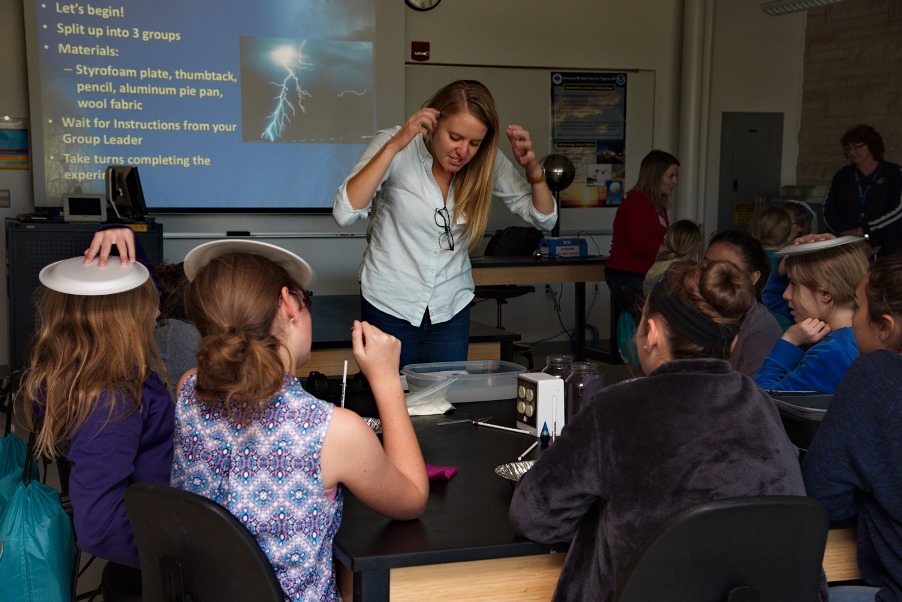 |
|
One of five Automated Surface Observation Systems (ASOS) across NE Kansas. |
Taking a rainfall observation at the office, one of four measurements taken each day. |
Staff conducting an office tour during an open house. |
A meteorologist teaching about lightning to girls during a Women in Science Day class. |
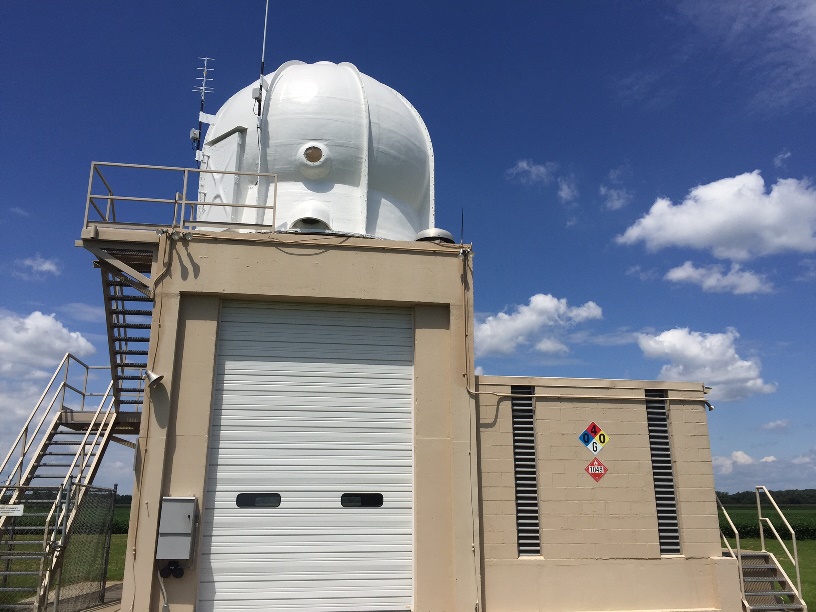 |
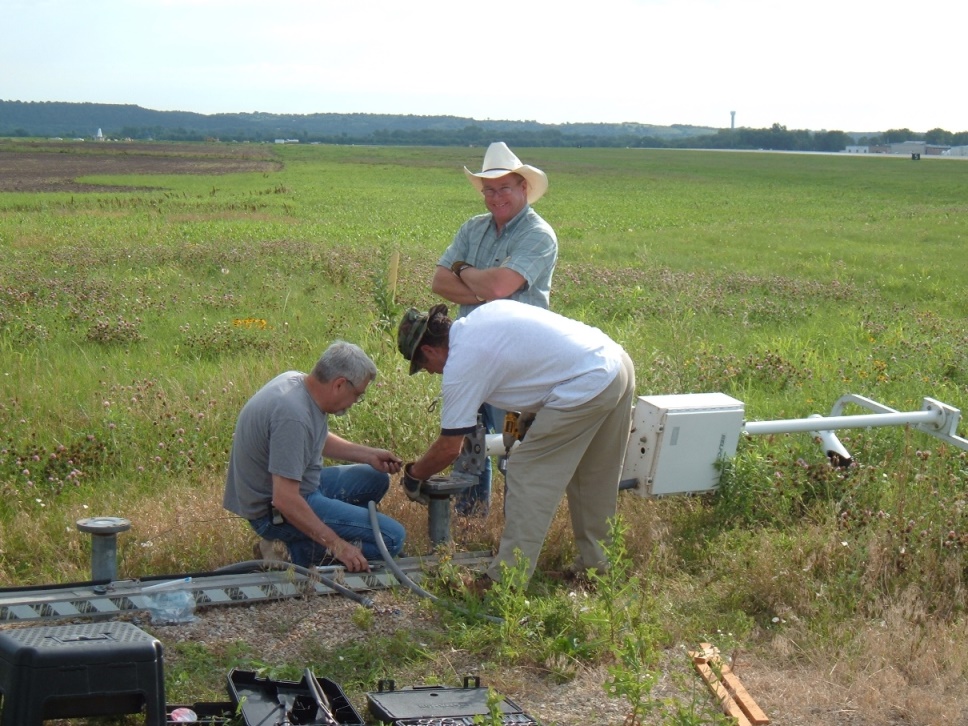 |
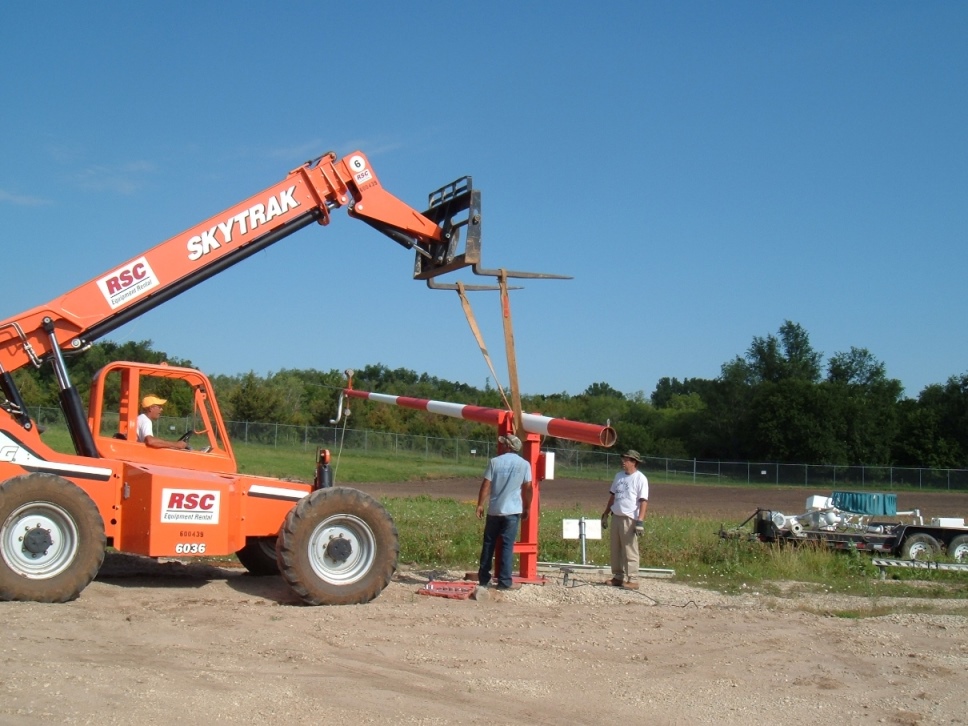 |
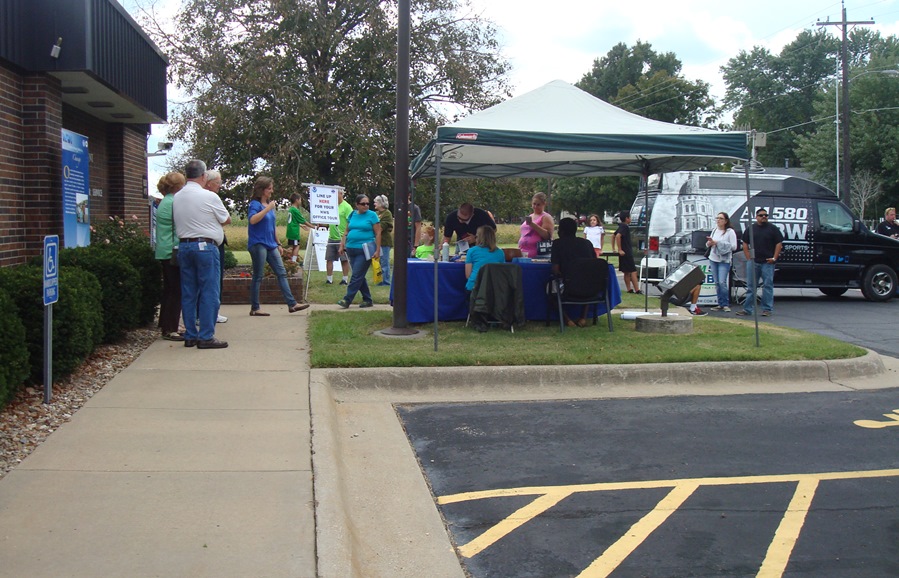 |
|
The upper air shelter at the NWS office, which houses the equipment needed to launch a weather balloon. |
Technicians working on an ASOS site. |
Technicians raising the wind tower on an ASOS site. |
The public lining up to take an office tour during our open house in 2016. |
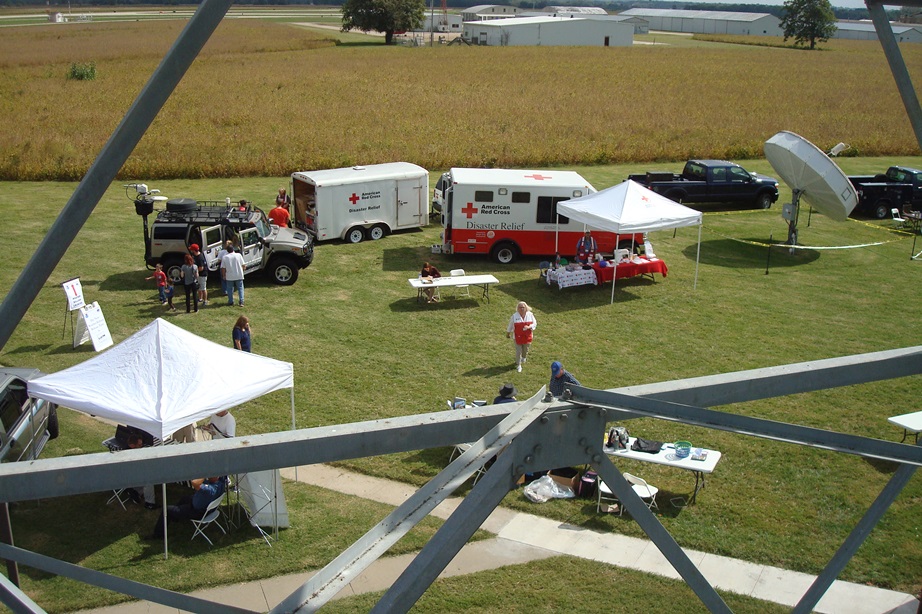 |
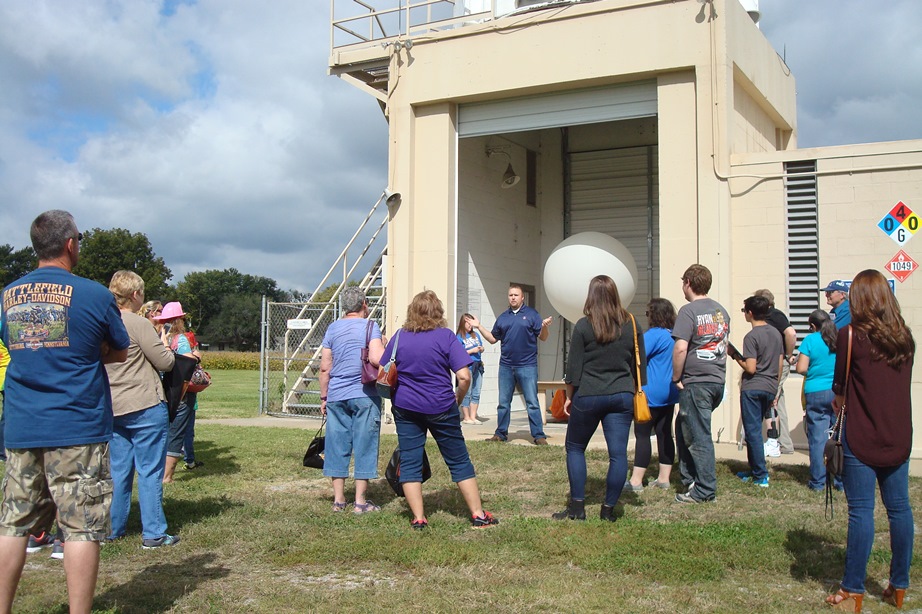 |
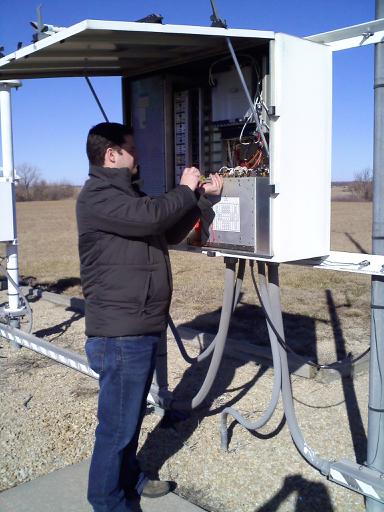 |
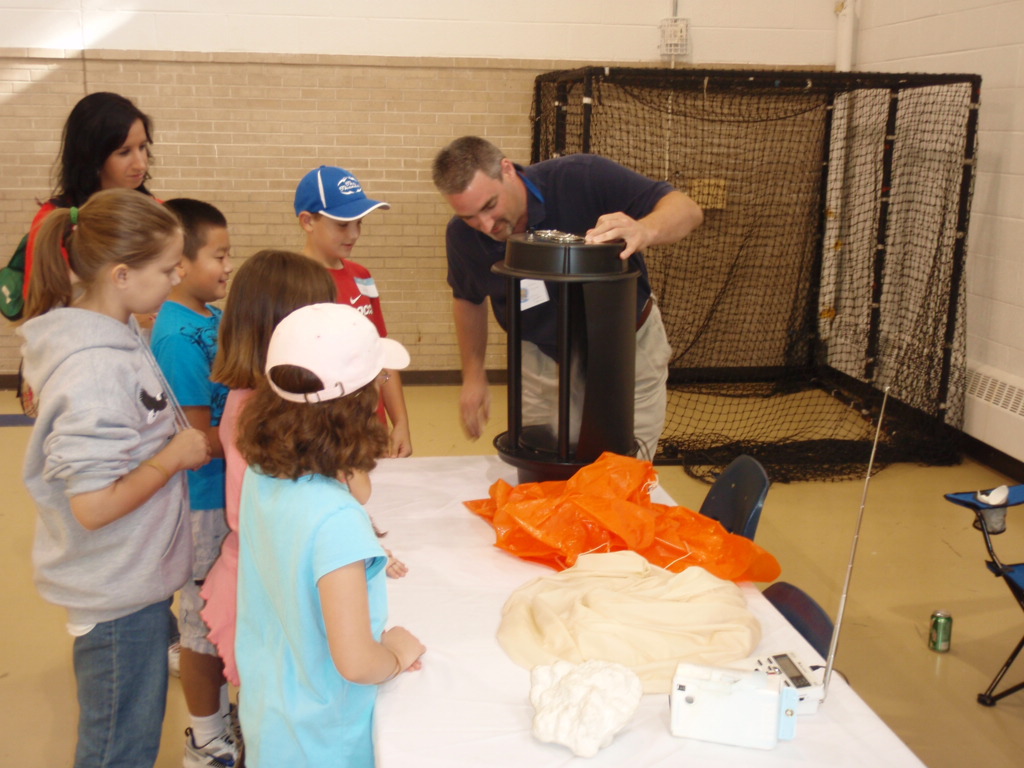 |
|
NWS partners set up outdoor booths for the office's open house. |
A crowd gathers for the launching of a weather balloon during the open house. |
A technician working on an observation site. |
An office staff member running a tornado machine for a group of children. |
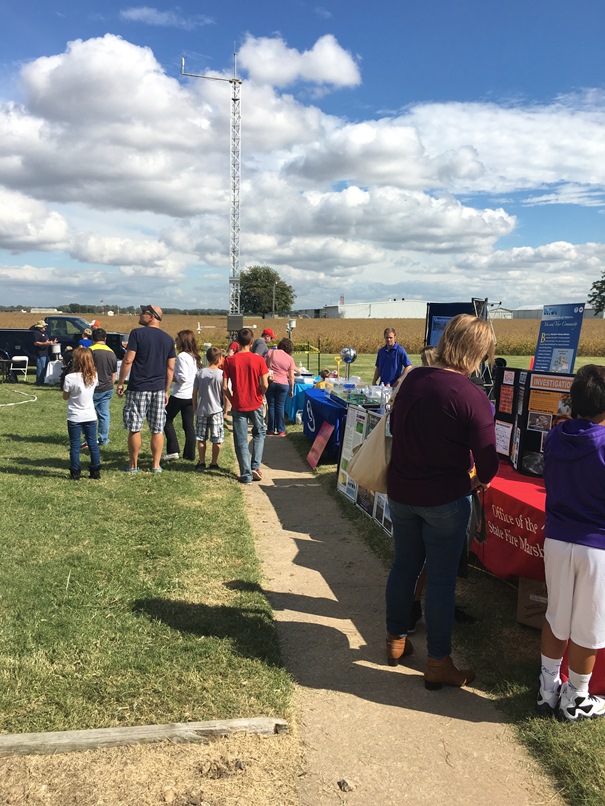 |
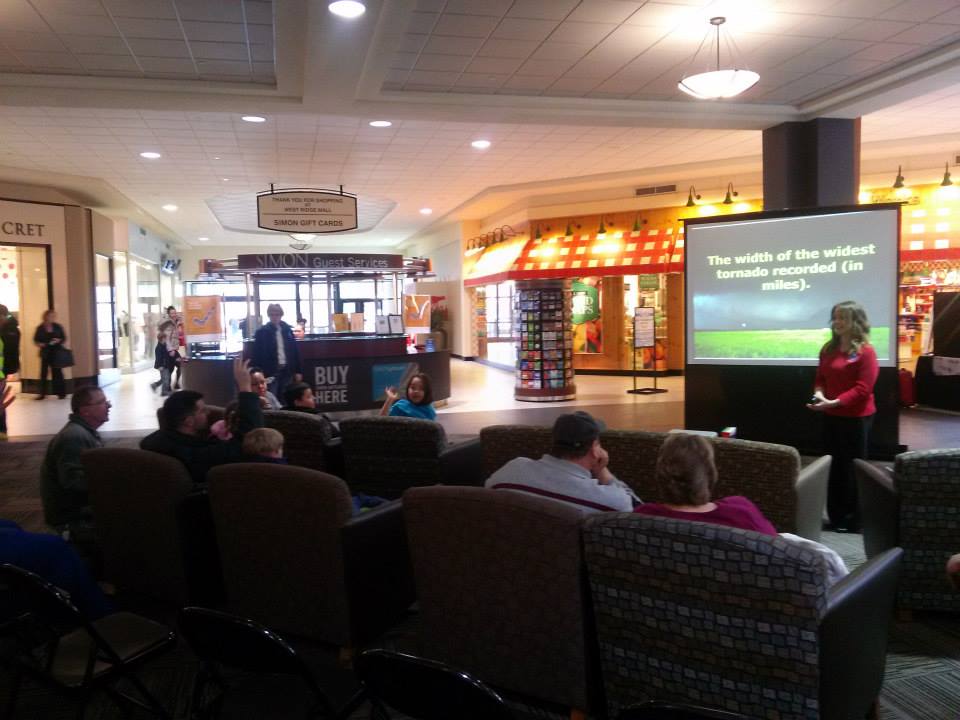 |
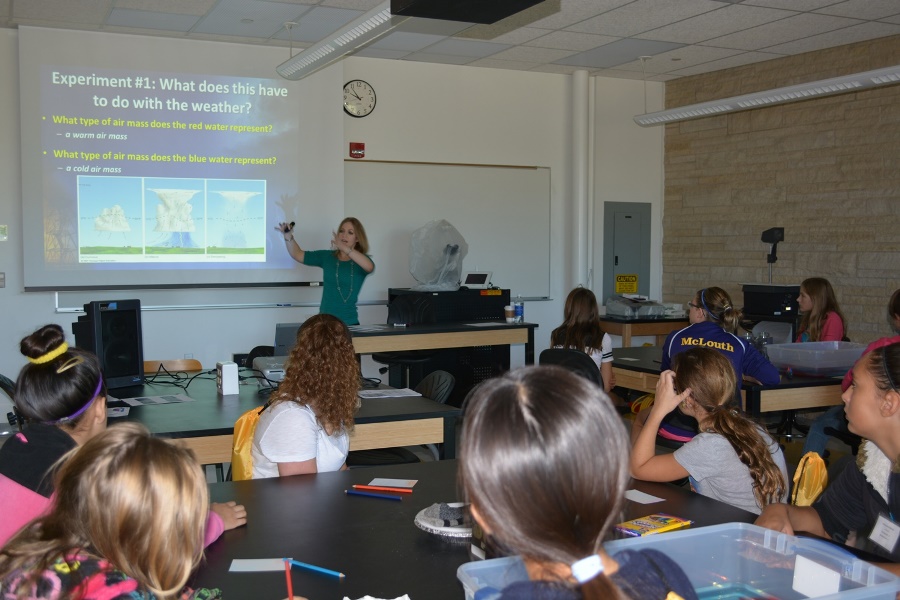 |
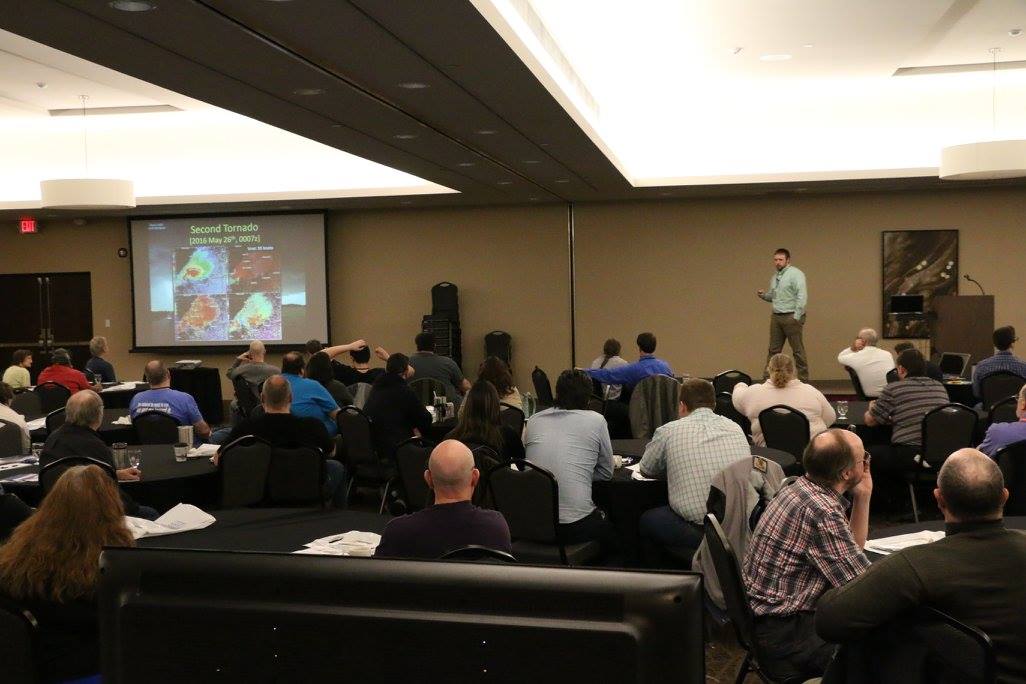 |
|
NWS partners set up outdoor booths for the office's open house. |
Educating the general public at a local mall during severe weather awareness week. |
Teaching young girls about how thunderstorms form. |
A meteorologist presenting on tornado risk communication. |
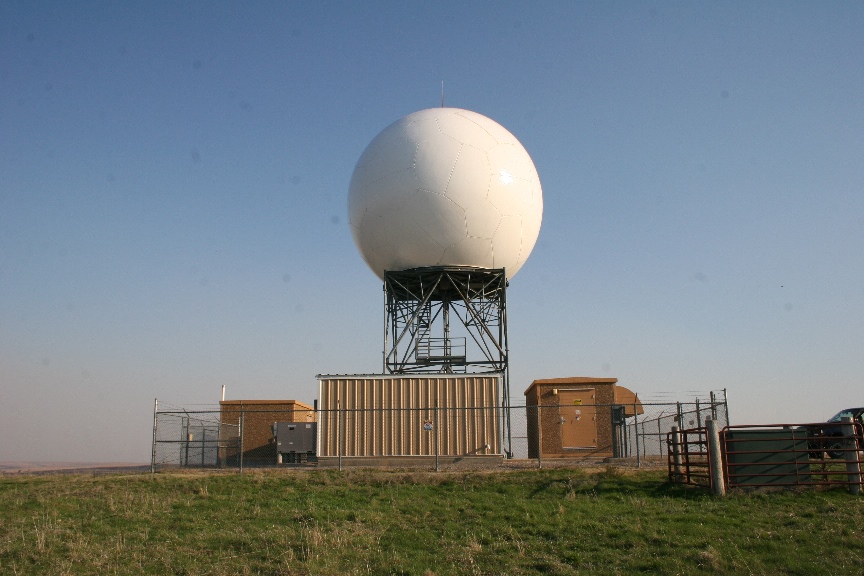 |
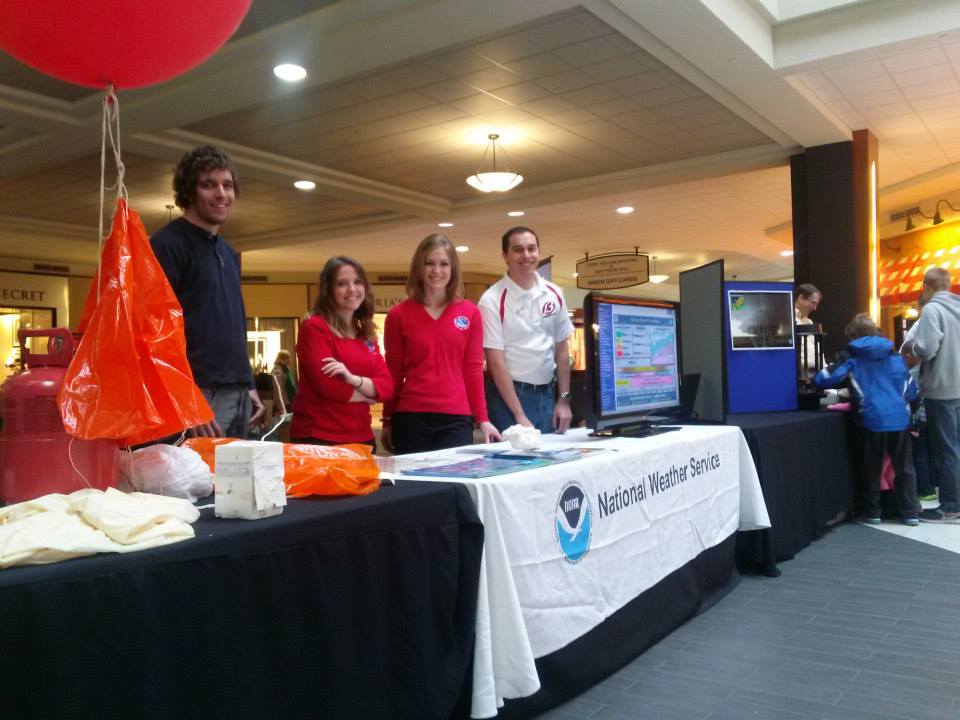 |
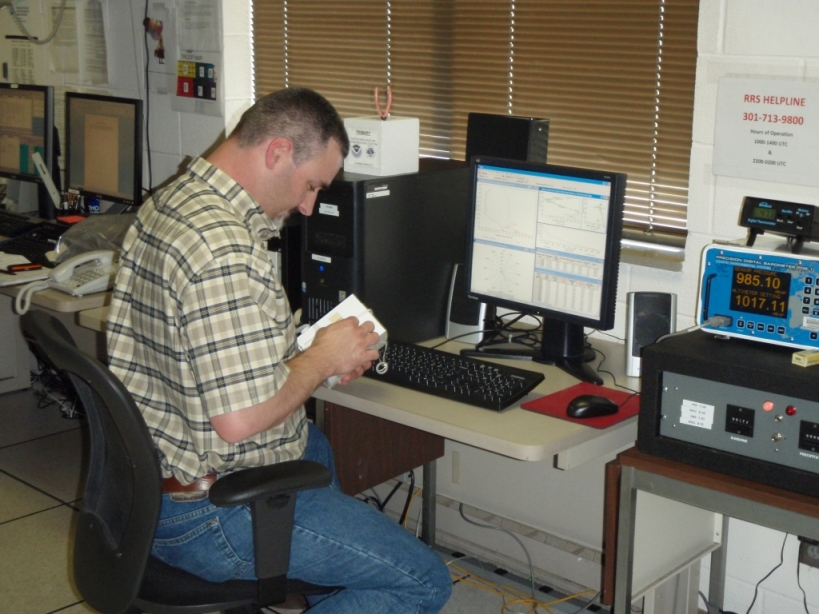 |
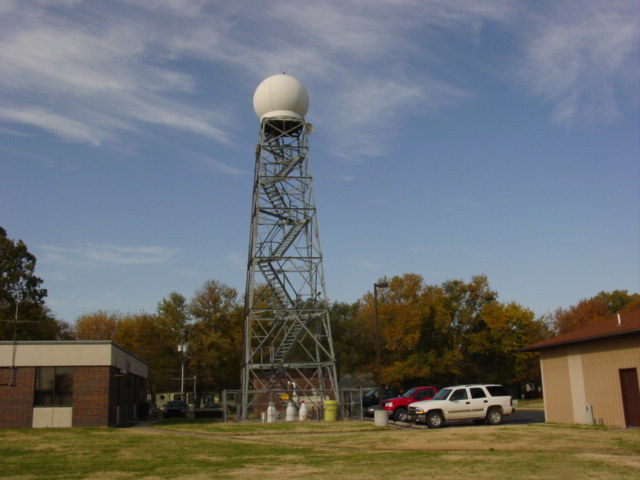 |
|
The KTWX WSR-88D radar near Alma in the morning hours. |
An NWS booth at a local mall during the Kansas severe weather awareness week. |
Preparing a radiosonde for flight on a weather balloon. |
The old WSR-74 radar tower still stands next to the office, though it was decommissioned in 1995. |
Our office biannual newsletter, the "Topeka Tiller", was replaced by an annual stakeholders report in 2023. The report is put together by the forecast office staff after the conclusion of the calendar year and is published in the first 1 to 2 months of the new year. It is intended to be a summary of highlights from the past year, including but not limited to local events, climate information, and upcoming activities. Articles will also feature the programs and techniques used by the NWS Topeka to keep the public informed and safe.
There are many opportunities that exist at the National Weather Service for college students to gain valuable work experience, both as paid employees and as unpaid volunteers. In fact, many current NWS employees began their careers by having participated in such programs themselves while in school. These opportunities provide potential employees an early start to building a foundation within the field of meteorology and a step toward a successful NWS career. Many managers throughout the NWS look for recent graduates with actual NWS experience when hiring new employees. It is also a great way for recent graduates to receive positive recommendations to hiring managers by being able to list NWS personnel as references.
Position Descriptions
Student Volunteer (Unpaid)
The National Weather Service in Topeka offers unpaid training opportunities for University of Kansas and University of Missouri college students majoring in meteorology or atmospheric science. Students have an opportunity to explore their career options, learn about the National Weather Service, and develop both professional and personal skills. The volunteer program at the NWS in Topeka introduces students to warning and forecast operations, hydrology, data acquisition, aviation and fire weather, research meteorology, graphics production, and decision support services.
Each position lasts for one semester with the student volunteering at the office two days per week for four hours each day (summer schedules may differ). Towards the end of the volunteer experience, the student may choose to work for eight hours once per week to gain the experience of working a full shift. Independent study credit may be earned through an agreement between the NWS and the student’s university. The application deadline for the spring semester is in early November while application deadline for the summer and fall semesters will be in April.
NOTE: Students will not be paid for their volunteer experience at the office.
Requirements:
The National Weather Service in Topeka is looking for highly motivated self-starters who desire career experience to enhance their academic course of study.
Students interested in applying for the student volunteer program should fill out this Application. Completed forms and supporting documents or questions about the program should be emailed to: w-top.webmaster@noaa.gov.
Job Shadow Opportunities (Unpaid)
Job shadow opportunities exist on a limited basis for a period of 2 to 4 hours for students of all grade levels. If you are a student interested in a job shadow opportunity, please email nws.topeka@noaa.gov for more information.
Pathways Student Employment Program (Paid)
The most common form of paid employment opportunities for students in the NWS is through the newly developed Pathways Program. This program is designed for both undergraduates and graduate students and offers participants formal periods of work experience directly related to their academic field of study. Participants may be eligible for permanent employment without competition after successfully completing their education and work requirements. Guidelines and the number of openings are determined on a regional and national scale, and are subject to budgetary limitations.
There is no set schedule for the announcement of NWS Pathways openings at this time. Therefore check the USAJobs website frequently for any updates or openings in the Pathways Program within the NWS. They will be listed under the GS-1399 Series and usually graded a 03/04.
Application Guidelines (Note: Official guidelines can be found in each job announcement.)
Additional information is available at the USAJobs Pathways page
The NOAA Ernest F. Hollings Scholarship Program (Paid)
Undergraduate students may apply for NOAA's Ernest F. Hollings Scholarship. Once a year NOAA solicits applications for a scholarship program in honor of retired South Carolina Sen. Ernest F. Hollings, who promoted oceanic and atmospheric research throughout his career.
Scholarship students will be eligible for awards that include academic assistance (up to a maximum of $9,500) for full-time study during the 9-month academic year; a 10-week, full-time internship position ($700/week) during the summer at a NOAA or partner facility; and academic assistance (up to a maximum of $9,500) for full-time study during a second 9-month academic year. The internship between the first and second years of the award provides the Scholars with "hands-on"/practical educational training experience in NOAA-related science, research, technology, policy, management, and education activities. Awards include travel funds to attend and participate in a mandatory orientation and conferences where students present a paper or poster. In addition, the scholarship student may receive a housing subsidy for scholars who do not reside at home during the summer internship. The application period usually begins in September and closes by the end of January.
Applications for the Hollings Scholarship Program are available online, by e-mail at StudentScholarshipPrograms@noaa.gov, by telephone to (301) 628-2913, or by mail to:
NOAA Hollings Undergraduate Scholarship Program
NOAA/Office of Education
1315 East-West Highway, Room 10734
Silver Spring, MD 20910
Permanent Employment with the NWS (Paid)
The meteorologist positions at the NWS are graduated both in responsibility and pay. The entry level position is known as a Meteorologist Intern. At times, a new graduate may apply for the next level up which is the General Forecaster position, but most of these jobs are bid as "Status," which means you must already be within the agency to apply for the job. NWS jobs are on the General Schedule (GS) pay scale and range from GS-5 to GS-15 depending on the job. Intern jobs are the lowest grades on the scale with a new graduate usually obtaining a Meteorologist Intern position at the GS-5 grade. If you have a Master's Degree in Meteorology, you may be able to get an Meteorologist Intern job at a GS-7 grade. Meteorology jobs are listed on the USAjobs website under what is called a series number, which is 1340. Therefore, as a new graduate, you would want to search for 1340-GS5/7 NWS Meteorologist Intern job openings. If you have never visited their website, please visit the Tips page that includes a video for finding and applying for jobs in the Federal Government.
Office Tours
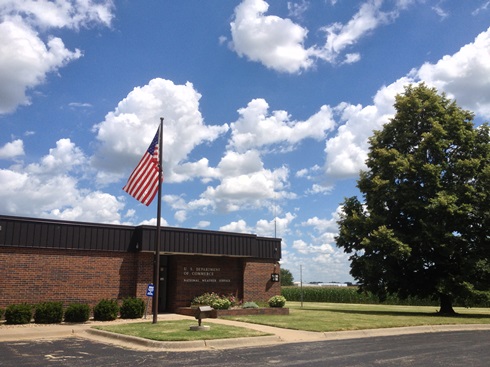 We offer office tours as an opportunity to showcase NWS services, provide education, and give the public an opportunity to visit their local NWS office. Do you have a group interested in an office tour? If so, please see the guidelines below:
We offer office tours as an opportunity to showcase NWS services, provide education, and give the public an opportunity to visit their local NWS office. Do you have a group interested in an office tour? If so, please see the guidelines below:
If you are interested in scheduling a tour, please contact 785-234-2592 or email nws.topeka@noaa.gov. Please provide the following information with your request:
Outreach Events
 A limited number of in-person outreach and preparedness events are offered each year. Requests for outreach events often include: civic groups requesting a lunch speaker about severe weather safety, a school career day, a school severe weather talk, a booth at a safety fair, senior living centers, conferences, and many other groups.
A limited number of in-person outreach and preparedness events are offered each year. Requests for outreach events often include: civic groups requesting a lunch speaker about severe weather safety, a school career day, a school severe weather talk, a booth at a safety fair, senior living centers, conferences, and many other groups.
If you are interested in scheduling an outreach event, please contact 785-234-2592 or email nws.topeka@noaa.gov
Spotter training and dispatcher training are considered mission critical and are scheduled through county emergency managers or other officials.